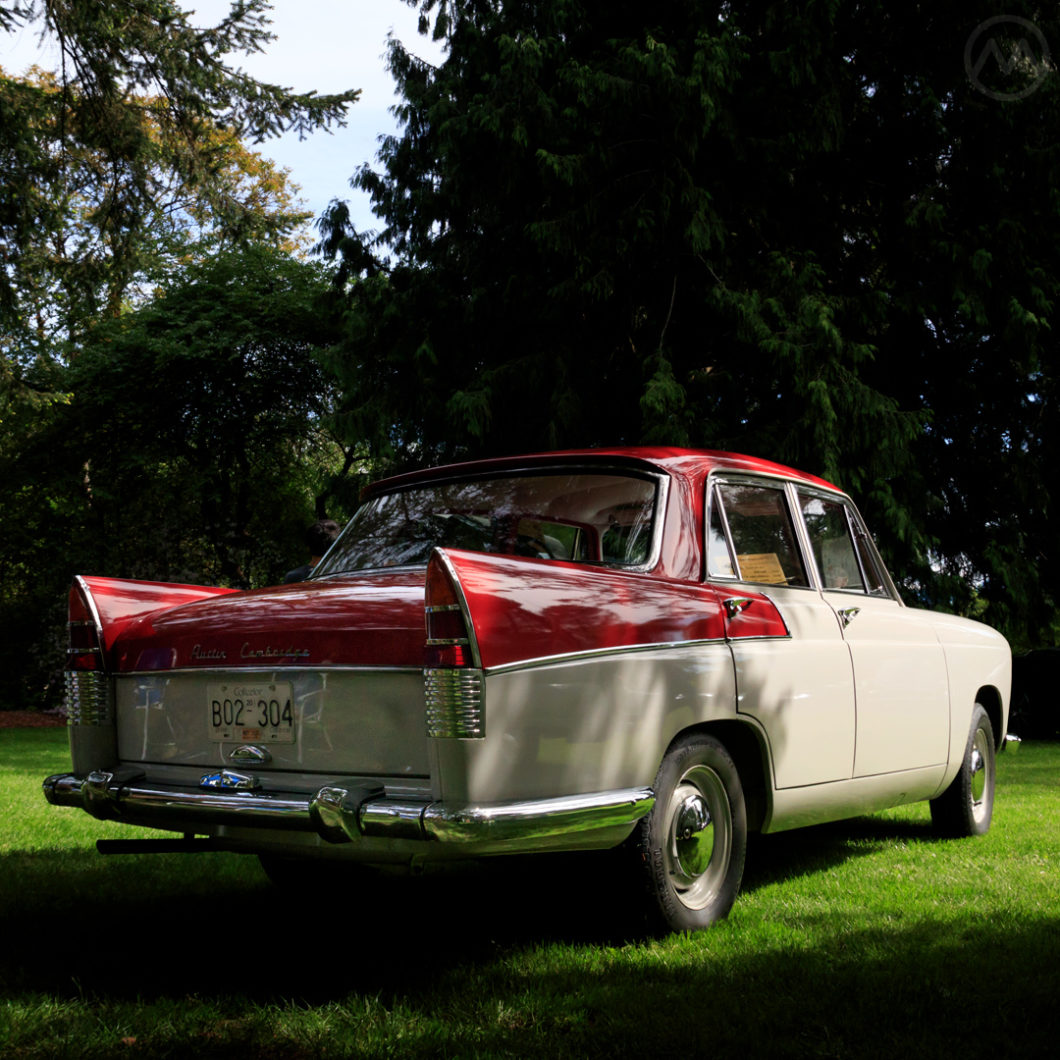The story of the big BMC Farina cars starts with the 1952 merger of the Nuffield Organization (Morris, MG, Riley, and Wolseley) and Austin into BMC.
Rationalizing the disparate array of cars the combine now offered started right away. As always, it takes awhile for two big companies to become a unit, and some of BMC’s newest cars, like Gerald Palmer-styled MG Magnette and Wolseley 4/44, had been on the drawing board already and were really pre-merger products; so the component-sharing really began under the hood with the MG’s engine.
The new-in-’53 Magnette was the first car to use the Austin-designed, Chevrolet-influenced B-series (evolved from an earlier Austin engine), which would migrate to the Wolseley (and many other BMC cars) by 1956. Austin’s new family mid-sizes and large cars with the A40 Cambridge and A90 Westminster bowed in 1954, and so did Morris’ new Oxfrord Series II, all powered by the B.
No sooner had they bowed than BMC began a plan to replace all of BMC’s mid-to-large family cars with a new design that would share far more between the brands.
Prince Philip and Dick Burzi
The two Austins were styled by longtime Austin vet Ricardo “Dick” Burzi, who’d been with Austin since the 1920s after leaving Lancia, possibly after a blow-up about his opposition to Italian Fascism. He was busy working on the new project when, in late 1955, Prince Philip dropped into Austin styling on a factory visit.
The Prince, a patron of engineering and a keen car enthusiast, casually mentioned to Austin boss Leonard Lord that he might want to get an outside consultant – the sketches and clays looked dated and “not quite up to European competition” in his opinion. He may have been thinking of the Citroën DS/ID.
The Prince doesn’t remember that, but did later remember offering Lord a suggestion about who he should get as a consultant – Battista Farina. The criticism must have stung. Lord was already familiar with Farina as was Burzi.
It’s possible Lord was already thinking about using him, but whatever the conversations were, within weeks Farina had an £84K contract to design a new car around the A40/A55/90 components that would rationalise BMC’s family car range.
Burzi, though disappointed, worked directly with Farina on the designs. What emerged was a smart-looking set of family cars with soaring “forward look”-influenced fins on a basic vehicle somewhat similar to other Pininfarina designs like the Peugeot 404 and Fiat 1800.
The Many, Many BMC Brands
Unlike at Peugeot and Fiat the big BMC “Farina” had to be tailored to six disparate brands.
BMC’s 1960s badge-engineering is a sore point in hindsight – because it set up needless complexity and costs later – but at the time it made political sense. This was mostly down to the strength of the fiercely-competitive dealer body that dated back to the 1920s and internal politics within the merged company. Having only two or three brands would have greatly helped later, but was politically untenable with the people selling the cars.
Badge-engineering can yield good results with cars that share components but don’t look or feel alike – but because the cars were in production for a very long time and all shared the same basic look, they became a little too familiar.
The full complement of four-cylinder Farinas (developed under codename ADO9) were the four-cylinder Austin A55 and A60 Cambridges, Morris Oxford (series V and VI), MG Magnette, Riley 4/68 and 4/72, and Wolseley 15/60 and 16/60.
The six-cylinder Farinas were physically larger cars (codename ADO10) powered by the Morris-designed C-series six. Although they looked very similar to the four-cylinder cars, they weren’t 100% the same and were aimed at the luxury market.
These bigger “Farinas” were the Austin A99 Westminster, Wolsely 6/110, and Vanden Plas 3-Litre Princess. The fanciest farina was the stand-alone Vanden Plas 4 Litre R. So similar was the resemblance to the fours that many people didn’t really recognize the difference unless they owned one.
On the other end of the spectrum, Austin’s small A40 Farina hatchback was a close relative of the fours, but with a sawed-off hatchback body.
Badge-engineering or no, the finned Farinas were hugely successful, at least early on. The volume leaders were the Austin A55 Cambridge and Morris Oxford V, and almost all were powered by the simple, strong B-series four. In the 1960s, the Austin gained a rarely-seen Perkins diesel.
Around the World
The fins were trimmed back in 1961 for a cleaner look and a nominal successor – the front-drive ADO17 “landcrab” arrived in 1964 – but the big cars kept on going for a long time after – the Austin, MG, and Riley into 1969 and the Wolseley and Morris versions into 1971.
Durable and comfy, they were popular as taxis after their appeal to families began to wane – as late as the late 1980s they were still in use as cabs in Jamaica (one features heavily in a 1985 music video by reggae MC Sophia George) and closer to home.
In global markets the Farinas were produced in a stunning array of configurations – Australians could have an Austin Freeway (a four-cylinder Farina wagon shell with a locally-built 2.4L six. In Argentina, the Farina was known as the Siam (Sección Industrial Amasadoras Mecánicas) Di Tella, an amalgam of British brand styling also available as a Pickup.
In North America, the Farinas got off to a strong start from MG and Austin dealers (often combined shops by then) but were undercut quickly by the Detroit “compacts” in 1960. This was less true in Canada where British vehicles enjoyed tariff advantages in the pre-Auto Pact days.
A big car in the U.K., the Farinas were considered small-ish in North America but appreciably larger than a VW or a Minx, which is exactly the market the U.S. “compacts were going for.
This fantastically clean A55 MkII is a 1960 model with the early-style tailfins and lives in British Columbia.

